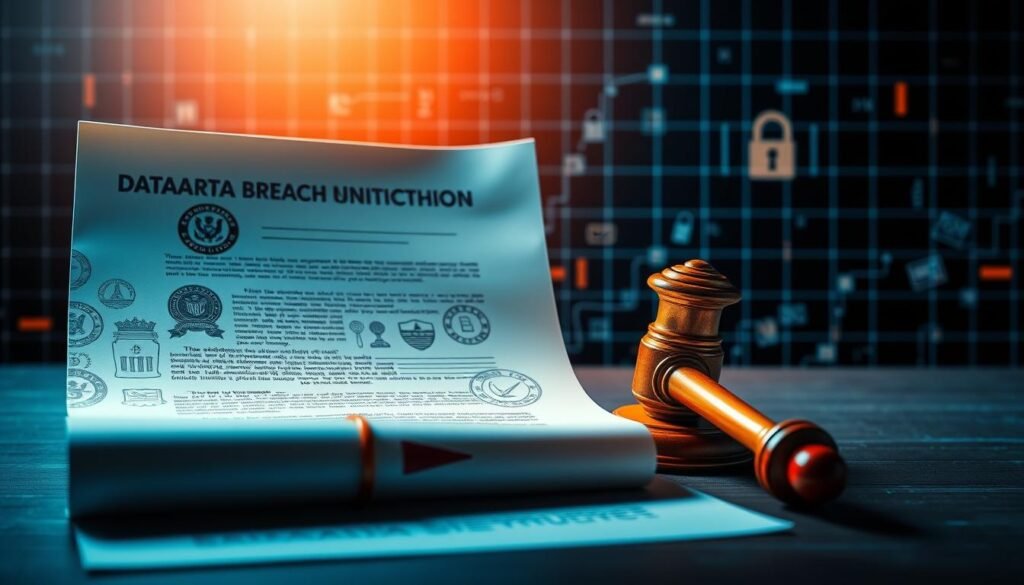What if everything you thought you knew about protecting your sensitive details was already outdated? Cybercriminals aren’t just hacking systems—they’re rewriting the rules daily. Your social media logins, bank accounts, and even medical records could be at risk right now without you realizing it.
Since the first major cyber incident in 2002—where 250,000 social security numbers vanished—threats have exploded. Last year alone saw attacks surge by 15%, with hackers targeting everything from smartphones to smart fridges. Yet most people still use passwords like “123456” or reuse them across accounts.
This isn’t about fearmongering. It’s about empowerment. You’ll learn why your digital footprint matters more than ever and how simple gaps in your security habits could leave doors wide open. We’ll show you real solutions that adapt as threats evolve—not textbook advice that collects dust.
By the end, you’ll know exactly how to lock down your information, spot red flags before disaster strikes, and build habits that keep you ahead of modern cybercrime. Ready to turn vulnerability into confidence?
Understanding Data Breaches
When sensitive details fall into the wrong hands, the consequences ripple far beyond your digital life. A security breach occurs when unauthorized access exposes private details—from your medical history to your family’s online activity. Criminals don’t just target corporations; your smartphone, home router, and even smart devices can become gateways for theft.

What Counts as Exposed Information?
Think beyond credit cards. Hackers hunt for Social Security numbers, prescription records, and children’s school accounts. Once stolen, this information appears on dark web marketplaces within hours—often bundled with thousands of other victims’ profiles.
How Do Security Gaps Happen?
Nearly 60% of incidents stem from two root causes. First, outdated software with unpatched flaws lets attackers slip through digital cracks. Second, clever phishing emails trick people into sharing passwords or downloading malware. Even tech-savvy users can miss fake login pages mimicking trusted sites.
Zero-day vulnerabilities—unknown software weaknesses—are especially dangerous. Unlike known issues, these hidden flaws give hackers free rein until developers spot and fix them. Pair this with social engineering tactics, and you’ve got a recipe for disaster no firewall alone can stop.
History and Evolution of Data Breaches
What started as a California security mishap in 2002 reshaped how the world handles private information. That April, thieves stole 250,000 Social Security numbers from a poorly guarded facility—a wake-up call about digital vulnerability.
Before 2005, companies often hid security incidents. The ChoicePoint scandal changed everything. When criminals accessed 140,000 records that February, the company initially told only California residents. Public outrage sparked new laws requiring nationwide notifications.
Early Incidents and Regulatory Milestones
Three events defined modern information protection:
| Date | Event | Impact |
|---|---|---|
| April 2002 | First major Social Security number theft | Revealed physical security flaws |
| Feb 2005 | ChoicePoint records exposed | Triggered state notification laws |
| May 2018 | GDPR enforcement begins | Set 72-hour global reporting standard |
These milestones pushed companies to prioritize security. Yet hackers adapted faster. By 2010, stolen details became dark web commodities. Cryptocurrencies let thieves profit anonymously—turning leaks into low-risk, high-reward crimes.
You now face smarter threats than those early targets. But understanding this history helps you spot weak spots in today’s defenses. Every regulation traces back to lessons learned the hard way.
Case Study Overview: Equifax Breach Lessons
Imagine waking up to find your most private details sold online—not because you clicked a suspicious link, but because a company you trusted ignored glaring security flaws. The 2017 Equifax incident exposed 147 million Americans’ information, including Social Security numbers and birth dates. This wasn’t a Hollywood-style hack—it was corporate negligence at its worst.
Key Findings from the Equifax Incident
Three critical failures turned this into a historic security disaster:
- Ignored warnings: Equifax knew about vulnerabilities for years but delayed fixes to save money
- Complete identity kits: Thieves got everything needed to impersonate victims—names, addresses, and Social Security numbers
- Slow response: Executives waited six weeks to warn the public while reportedly selling stock
The $700 million settlement sounds impressive until you do the math. If all affected people claimed their share, they’d get about $5 each—barely covering a latte while facing lifelong identity theft risks.
What makes this case terrifying? Hackers accessed systems through a known software flaw Equifax hadn’t patched. Your Social Security number can’t be changed like a credit card, making this leak particularly dangerous. Foreign operatives allegedly orchestrated the attack, proving security failures can threaten national stability.
This disaster teaches one brutal truth: You must actively protect your information. Companies might prioritize profits over your privacy, but you control where you share sensitive details and how you monitor for misuse.
Data Breach Notification and Legal Requirements
Do you know your rights when companies mishandle your private details? Over 60 countries now require organizations to alert you if your information gets exposed. But the rules vary wildly—what protects you in Texas might not apply in Tokyo.

Regulatory Framework in the US and EU
American laws resemble a patchwork quilt. All 50 states have notification policies since 2018, but no single federal rule exists outside healthcare (thanks to HIPAA). Meanwhile, the EU’s GDPR demands companies report leaks within 72 hours—or face fines up to €20 million. You’ll typically hear about exposures faster if you’re in Europe versus Alabama.
Consequences of Non-Compliance
Ignoring these rules costs companies dearly. GDPR penalties hit $1.2 billion in 2023 alone. Agencies like the FTC can sue firms that hide incidents, and class-action lawsuits often follow. But here’s the catch: some businesses still gamble, delaying alerts to avoid bad publicity. They risk losing customer trust permanently when caught.
Your best defense? Track which agencies oversee your region. Check your state attorney general’s site for local breach notification laws, and always verify corporate alerts against official sources. Quick action reduces identity theft risks by 60% compared to delayed responses.
Impacts on Affected Consumers
Your stolen information could haunt you for decades—even if you think the danger has passed. Once criminals get their hands on your private details, they don’t just disappear. These digital footprints linger in shadowy marketplaces, ready to resurface when you least expect it.
Long-term Risks of Identity Theft
Identity theft isn’t a one-time crime. Thieves might use your Social Security number to:
- Open new credit cards years after the initial incident
- Apply for loans using your financial history
- Rent apartments while pretending to be you
The FTC reports victims spend 100+ hours fixing ruined credit scores. In 2017 alone, individuals lost $63 million more to fraud than the previous year—and these numbers keep climbing.
Consumer Relief and Free Credit Monitoring
Companies often offer free credit monitoring after leaks, but only 5% of eligible people use it. These services alert you about:
- New accounts opened in your name
- Unexpected credit score changes
- Public records using your details
Ignoring these tools leaves you vulnerable. While credit card fraud gets resolved faster, identity theft involving medical records or tax filings can take years to untangle. Enroll in monitoring immediately—it’s your first defense against invisible threats.
Impact on Businesses and Organizations
Businesses often recover from security incidents faster than their customers do. While headlines focus on massive leaks, companies frequently treat these events as temporary setbacks rather than existential threats. Let’s unpack why this disconnect exists and what it means for your protection.
Reputational Damage and Financial Costs
You might assume leaks cripple companies financially, but research tells a different story. The average security failure costs firms $200,000—less than many marketing campaigns. Even extreme cases averaging $5 million represent manageable expenses for large corporations.
Where does this money go? Over half covers legal battles and free monitoring services for affected customers. Only a fraction funds actual security upgrades. Stock prices often dip temporarily but rebound within months, removing pressure for systemic changes.
Consider this: U.S. companies collectively spend $10 billion annually on incident fallout. While staggering, this amounts to just 0.5% of total corporate profits. Many firms view these costs as routine—like replacing broken equipment—rather than urgent priorities.
This creates a dangerous cycle. Companies prioritize damage control over prevention, while you absorb the real risks. Higher prices and reduced services often offset corporate losses, leaving individuals vulnerable to identity theft and fraud.
Technical Causes: Software and Hardware Vulnerabilities
Your favorite apps and devices have hidden weak spots criminals love to exploit. Every digital tool you use—from smartphones to smart speakers—contains bugs that can become security risks. These flaws act like unlocked windows in a house, letting thieves slip in silently.
The Hidden Danger of Unknown Flaws
Zero-day vulnerabilities are like invisible cracks in your digital armor. Hackers discover these weaknesses before developers do, leaving no time to create fixes. Your information becomes exposed the moment attackers weaponize these gaps—often before you even update your software.
Your Best Defense Against Digital Weaknesses
Encryption scrambles your details into unreadable code, protecting them even if stolen. Yet many companies skip this step to save time or money. Always enable two-factor authentication—it blocks 99% of password-based attacks instantly. Regular updates patch known flaws, closing doors before criminals pick the locks.
While no system is perfect, combining encryption with timely software updates slashes your risks dramatically. Treat your devices like front doors: lock them properly, check for damage, and never leave keys where thieves can find them.





